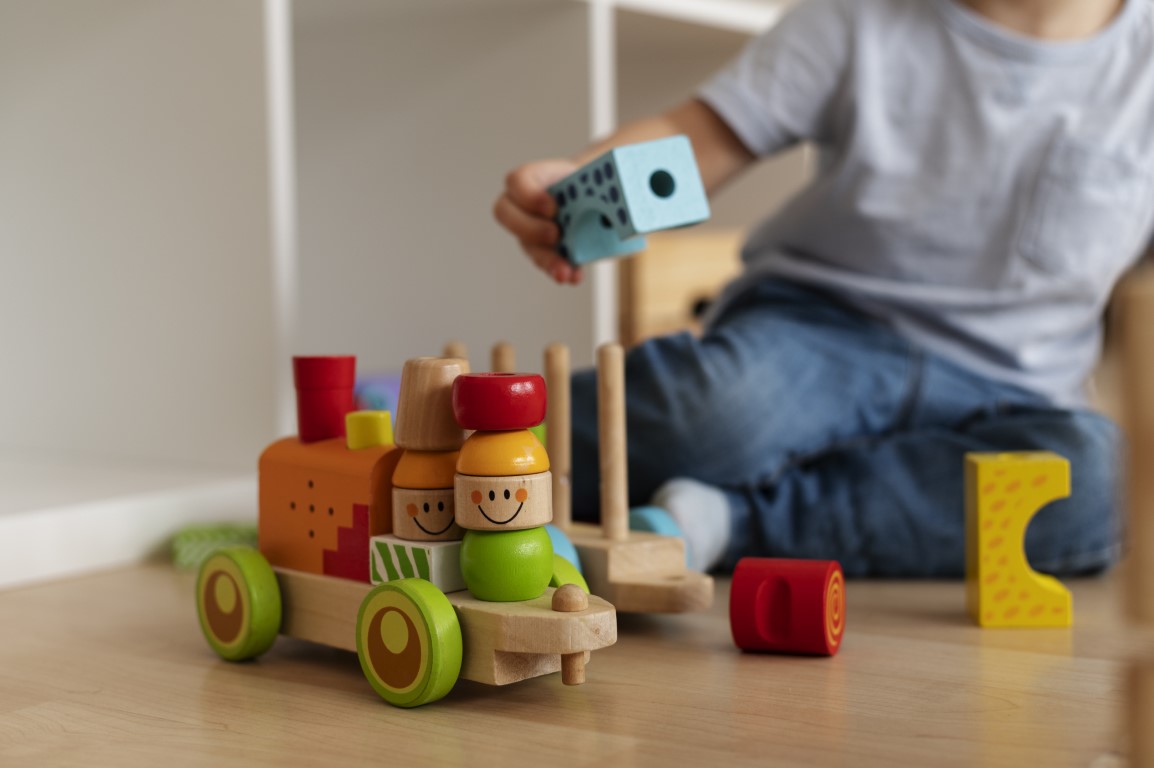Address
304 North Cardinal
St. Dorchester Center, MA 02124
Work Hours
Monday to Friday: 7AM - 7PM
Weekend: 10AM - 5PM


Choosing the right toys for a 1-year-old can be an exciting yet crucial decision for parents and caregivers. During this formative stage of a child’s life, play is not just about fun; it’s also a fundamental part of their development. In this guide, we will explore the best toys for 1-year-olds that foster their physical, cognitive, and emotional growth.
Safety First
Stimulating Senses
Encouraging Exploration
Stacking and Nesting Toys
Shape Sorters
Soft Plush Toys
Musical Instruments
Activity Centers
Push and Pull Toys
Interactive Books
As we conclude this guide, remember that the best toys for 1-year-olds are not just playthings; they are tools for learning and growth. Pay attention to your child’s interests and preferences, and don’t forget to prioritize safety. By selecting age-appropriate toys that stimulate their senses and encourage exploration, you’re providing the building blocks for their future development.
Developmental Stimulation: Toys play a crucial role in stimulating a child’s development during their early years. They provide opportunities for sensory exploration, fine motor skill development, hand-eye coordination, and cognitive growth. Playing with toys helps children refine their motor skills, grasp objects, manipulate shapes, and learn cause-and-effect relationships.
Cognitive and Problem-Solving Skills: Toys that require problem-solving, such as shape sorters or puzzles, can enhance a child’s cognitive abilities. They encourage critical thinking, spatial reasoning, and logical reasoning as children figure out how to fit pieces together or solve simple puzzles.
Sensory Exploration: Many toys for one-year-olds offer sensory experiences that engage their senses of touch, sight, sound, and sometimes even taste or smell. These experiences help children understand the world around them, develop sensory awareness, and learn to differentiate textures, sounds, colors, and shapes.
Language Development: Certain toys, such as interactive books or toys that produce sounds or music, can contribute to language development. They expose children to new words, sounds, and concepts, encouraging language acquisition and early communication skills.
Social and Emotional Development: Toys can also promote social and emotional development. For example, dolls or stuffed animals can encourage nurturing and empathy skills as children engage in pretend play and imitate caregiving behaviors. Toys that facilitate sharing, turn-taking, and cooperative play promote social interactions and teach essential social skills.
Independence and Creativity: Toys that encourage independent play, such as building blocks or open-ended toys, allow children to explore their imagination, problem-solve, and engage in creative play. These experiences help foster self-expression, innovation, and independence.
Fun and Enjoyment: Above all, toys provide joy and entertainment for one-year-olds. Play is a natural and essential part of childhood, and toys make playtime enjoyable, engaging, and exciting for children. They bring happiness and a sense of fulfillment, contributing to overall well-being and positive emotional development.
It’s important to select age-appropriate toys that are safe, durable, and stimulating for one-year-olds. Additionally, parental supervision and interaction during playtime further enhance the benefits of toys, as it provides opportunities for bonding, guidance, and shared experiences.
Ride-On Toys: For one-year-olds learning to walk and balance, ride-on toys are ideal. While they learn to balance independently, they can move the toy.
Toys that Pull and Push Toys that pull and push are ideal for one-year-olds learning to walk. They can work on their balance and coordination by holding onto the toy and pushing or pulling it along.
Balls: For one-year-olds, balls are a great way to develop their gross motor skills. They can roll or throw the ball, which helps with their gross motor skills and hand-eye coordination.
Soft Toys: For one-year-olds whose fine motor skills are still developing, soft toys like stuffed animals and soft blocks are ideal. They are able to hold onto the toy and play with it without hurting themselves.
Activity Centers : For 1-year-olds who are still developing their physical and cognitive abilities, activity centers are ideal. They can learn about cause and effect by playing with various toys like spinners and beads.
Puzzles: Puzzles are great for young children learning how to solve problems. To keep your little one interested, you can find puzzles in a variety of shapes and colors.
Shower Toys: Bath toys are ideal for infants who enjoy taking a bath. Toys with the ability to float or spray water include boats and rubber ducks.

Play Tents: For one-year-olds learning to explore and pretend play, play tents are ideal. They can play with a variety of toys inside the tent by climbing in and out.
Sensory Toys: For infants who are still developing their senses, sensory toys are ideal. Toys with a variety of textures and colors are available to engage their senses.
Kitchen Play: Pretend play-loving one-year-olds will love play kitchens. They can learn about cooking and food while playing with various kitchen tools.


Toy Trucks and Cars: For 1-year-olds who enjoy playing with cars and trucks, toy cars and trucks are ideal. They can learn about various vehicle types as they push the toy along.
Toys from wood: For one-year-olds whose fine motor skills are still developing, wooden toys are ideal. They can learn about various shapes and colors while playing with the toy without getting hurt.
In conclusion, there are a variety of toys that are appropriate for one-year-olds and can aid in the development of their social, cognitive, and physical skills. It is essential to select toys that are secure, appropriate for your child’s age, and engaging.

